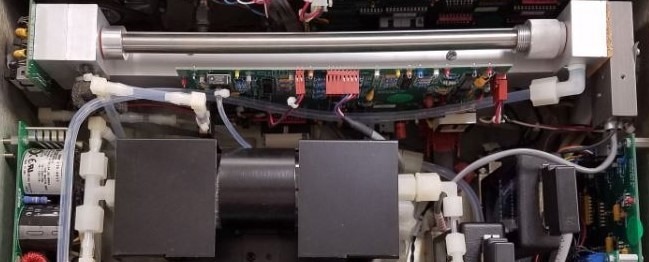Ensuring the accurate calibration of ambient air monitors is crucial for precise pollution monitoring. Such monitors play a vital role in providing crucial data regarding the health of the immediate atmosphere and identifying the necessary changes to enhance air quality.

Image Credit: Environics, Inc.
Ozone transfer standards hold immense significance as they ensure that air quality analyzers are precisely calibrated and effectively operational. Therefore, comprehending the advantages and disadvantages of ozone transfer standards can help in gaining a better understanding of this critical aspect.
Ozone Transfer Standards: A Brief Overview
The classification of ozone standards is based on their association with a well-known primary standard. The secondary ozone standards are systems that are calibrated and verified against a primary standard, while tertiary standards are calibrated and verified against a secondary standard, and so on.
These non-primary standards are used either in a laboratory setting as bench standards or in the field to calibrate equipment as transfer standards.
It is crucial to reverify them routinely to ensure they remain compliant with the higher-level standard. In this context, "level" refers to reliability, so a higher-level primary standard can be reliably verified.
To simplify the terminologies used, the Environmental Protection Agency (EPA) is attempting to consolidate the terms into a more organized framework. Consequently, primary standards are now increasingly referred to as Level 1 standards, while secondary standards are referred to as Level 2.
Advantages
Ozone transfer standards provide a robust framework for quality assurance and control (QA/QC). With the availability of Level 1, Level 2, and Level 3 ozone transfer standards, it is possible to conduct a comprehensive end-to-end process validation.
Level 1 standards are not suitable for use in the field but are ideal for lab procedures and benchtop validation. In contrast, Level 2 standards can be used in a fixed location to certify other standards, which can be subsequently used to calibrate analyzers in the field.
Disadvantages
Due to their high complexity, the reliability of O3 transfer standards may be called into question. To address this issue, transfer standards must be qualified to demonstrate their stability and accuracy.
Each lower standard in a chain assumes a greater level of uncertainty, which will–at some point–fall below permissible limits.
Ozone Transfer Standards with Environics
Environics has a long history of manufacturing ozone calibration systems for ambient air monitoring. The Environics S9100 is a popular choice in the Air Quality Monitoring Programs of both the EPA and California Air Resource Board (CARB).
The company has developed a range of gas mixing systems, transfer standards, and other instruments, which demonstrates its understanding of the importance of ozone transfer standards and its place within ambient air monitoring.
The Environics® Series 6123 Ozone Transfer Standard with Photometer is an example of its advanced instrumentation. This powerful instrument for ozone monitoring and reporting features a program for automatic ozone calibrations.
The 6123 is a type of photometer that meets all the requirements set by the U.S. Environmental Protection Agency for a level 3 transfer standard. Additionally, its mass flow controller is calibrated to the NIST (National Institute of Standards and Technology) traceable primary standard.
The 6123 includes an ozone generator with a UV-based light source, which is temperature-controlled and runs on a photo-optical feedback circuit, ensuring reliable ozone generation.
A summary of the key benefits and features include:
- Automatic leak test function
- Ease of use
- Error correction via closed-loop PID control
- Mass flow controlled calibrated at 11 points
- A photometer accurately measures the amount of ozone generated
- User-friendly software

This information has been sourced, reviewed and adapted from materials provided by Environics, Inc.
For more information on this source, please visit Environics, Inc.